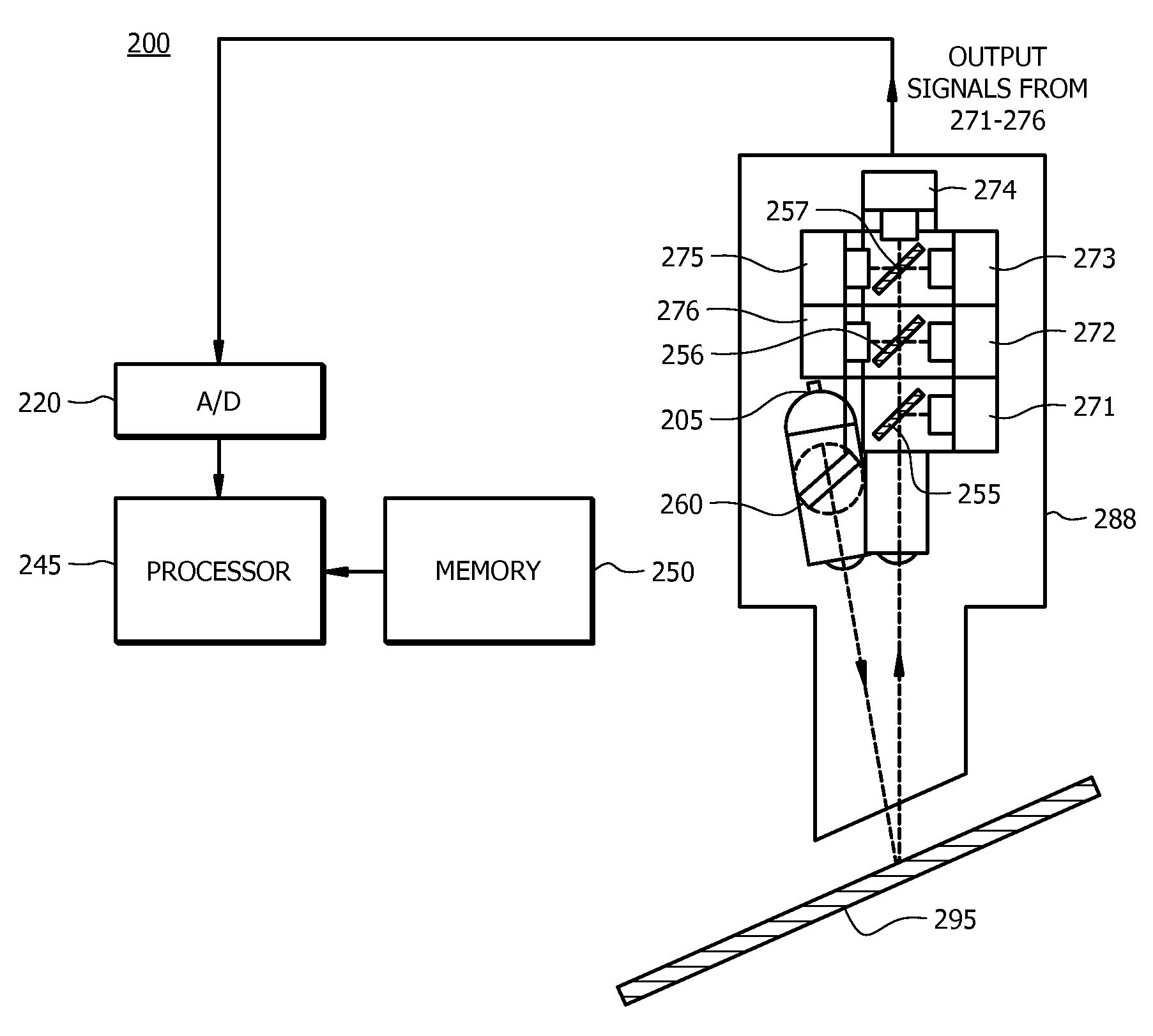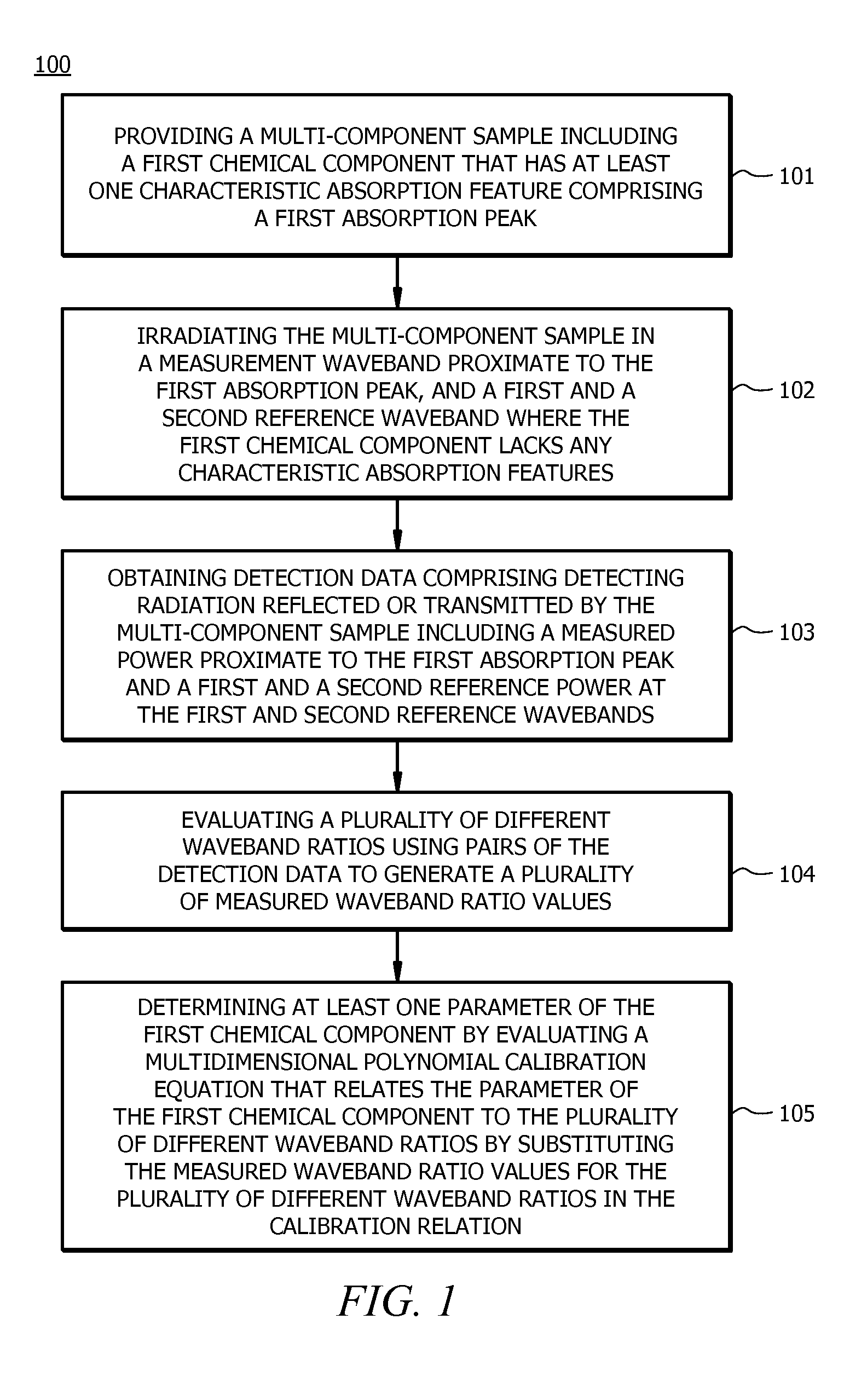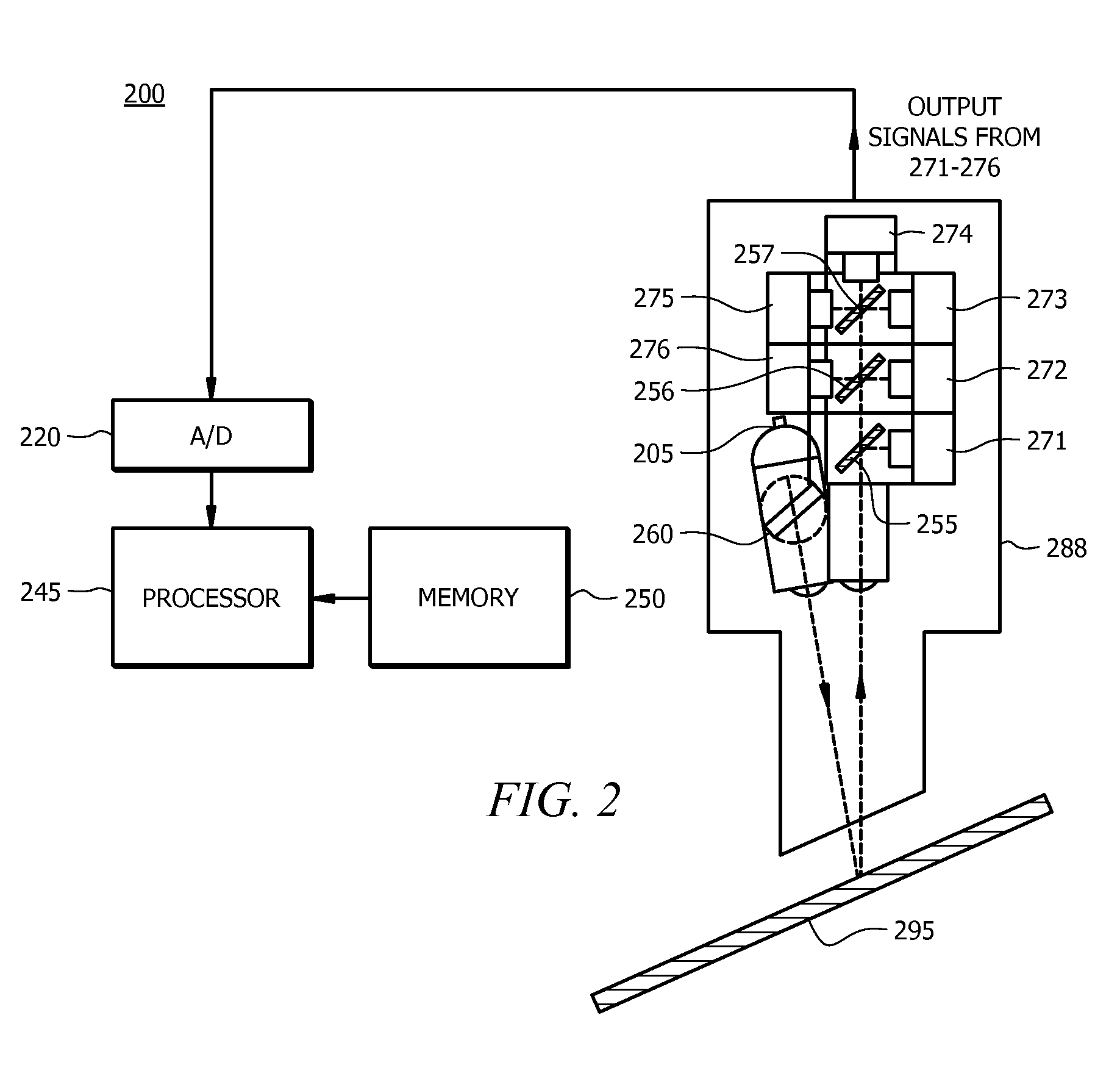Spectroscopy having correction for broadband distortion for analyzing multi-component samples
a multi-component sample and broadband distortion technology, applied in the field of spectroscopy, can solve the problems of non-measurable non-corrective algorithm, non-measurable non-corrective algorithm, and general non-use of ftir spectroscopic systems for online sensing,
- Summary
- Abstract
- Description
- Claims
- Application Information
AI Technical Summary
Benefits of technology
Problems solved by technology
Method used
Image
Examples
example 1
Measurement of Moisture in White Mineral-Based Powder
[0032]In this example, moisture was measured for three (3) different types of powder using a fixed-filter, non-dispersive, reflection mode spectroscopic sensor. The exact nature of the differences between the types of powder are not material to this example, but each led to different scattering behavior, and hence different functional forms of the calibration equation. All data was collected simultaneously at two (2) reference wavelengths (1.3 and 1.8 μm), as well as at the 1.4 μm and 1.9 μm water absorption peaks (measure wavelengths). A three (3) dimensional 2nd order fit was defined by the following general equation:
M=aX+bY+cZ+dX2+eY2+fZ2+g
[0033]where M is the moisture content (e.g. wt. % moisture) as measured by the sensor, a, b, c, d, e, f and g are calibration parameters, and X, Y, Z are the WRs (variables). The above equation is 3-dimensional due to the use of three (3) WRs (X, Y and Z), and the equation is second order du...
example 2
Measurement of Thickness of TiO2-Doped PET
[0034]In this example, the total thickness of polyethylene terephthalate sheet, doped with a mineral whitener (TiO2), was measured using a fixed-filter, non-dispersive, transmission mode spectroscopic sensor. The mineral whitener leads to scattering of the near-infrared light and consequent deformation of the absorption spectrum. This scattering was corrected using an algorithm according to an embodiment of the invention. After establishing a calibration relation using samples of known thickness, the total thickness in the range from 25 to 70 microns was measured in random samples with an accuracy of less than 1 micron, generally being within 1.0% (2-sigma). In comparison, the total thickness of the same material performed using a standard non-corrective algorithm was found not to be measurable (i.e. a measurement error of over 100% (2-sigma).
[0035]As known in the art, the thickness parameter may be obtained from a mass-per-unit-area paramet...
PUM
 Login to View More
Login to View More Abstract
Description
Claims
Application Information
 Login to View More
Login to View More - R&D
- Intellectual Property
- Life Sciences
- Materials
- Tech Scout
- Unparalleled Data Quality
- Higher Quality Content
- 60% Fewer Hallucinations
Browse by: Latest US Patents, China's latest patents, Technical Efficacy Thesaurus, Application Domain, Technology Topic, Popular Technical Reports.
© 2025 PatSnap. All rights reserved.Legal|Privacy policy|Modern Slavery Act Transparency Statement|Sitemap|About US| Contact US: help@patsnap.com



